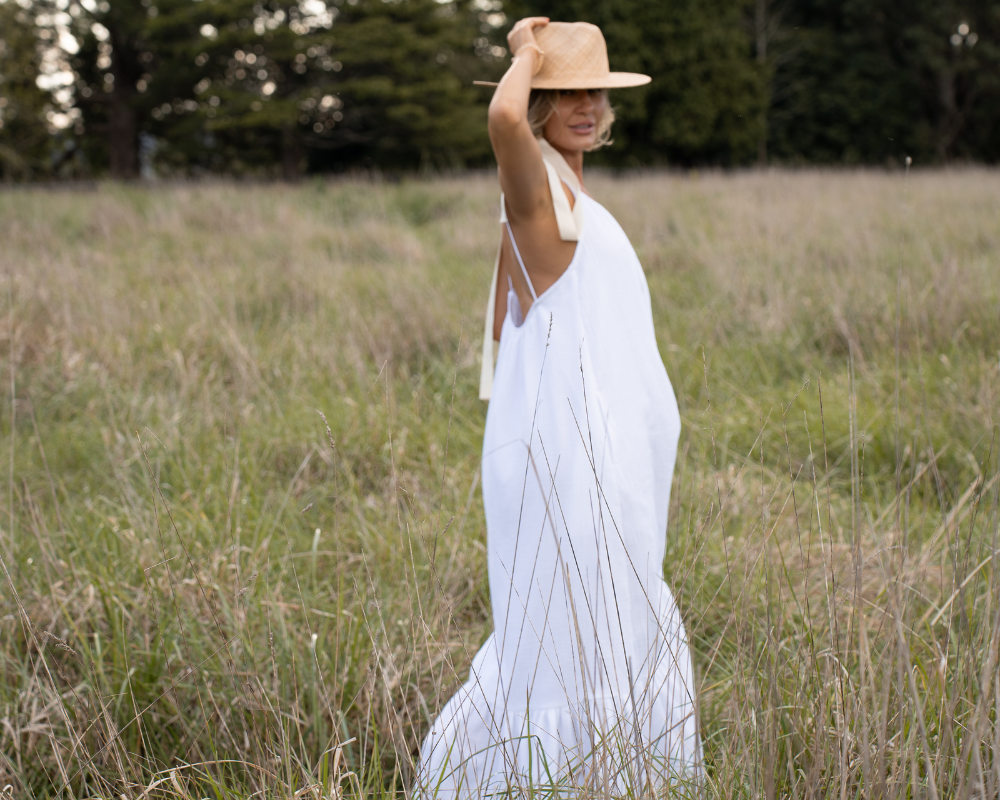It’s hard to avoid the fact that many of the clothes we buy in Australia are made in sweatshops in developing countries by underpaid, mostly female workers in often unsafe conditions. If you’ve watched the documentary The True Cost (and I highly recommend you do) the truth is distressing. The fashion industry has a lot to answer for. As a brand we have made a promise to treat workers and the planet with respect and as a consumer I also want to do better.
Shopping ethically for your clothes can seem like too big an issue to deal with on your own but individual action on a collective scale can change everything. If you don’t know where to start I’ve put together some simple tips to help you re-evaluate and put a more sustainable wardrobe plan into action.
Love Your Clothes
The best thing we can all do is to just buy less stuff. Vivienne Westwood said it best, “Buy less, choose well and make it last”.
- Look after your clothes and extend their life by following the manufacturers care instructions.
- Wash your clothes less often at lower temperatures. Clothes lasts longer when washed in cold water. Hot water is harsh and can damage delicate fibres.
- Use eco-friendly washing products or try adding a cup of white vinegar to your wash to help tackle stains, add brightness to whites and help keep your clothes and machine free of soap residue – helping both to last longer.
- Hang your cotton tees to dry on a hanger in the shade and avoid ironing!

Mend & Repair
- Repair damaged or worn clothing by learning some basic mending techniques or find a good seamstress.
- Up style damaged or worn clothes with patches or turn that rip into a feature!
Edit Your Wardrobe
Break the cycle of fast fashion and join the slow fashion movement. Get the maximum use out of a minimal wardrobe.
- Review your wardrobe and work out what you really wear then budget for quality staple pieces. Stick to your own personal style. If you need help try one of the style Apps like, Smart Closet or Stylebook.
- Shop smarter. How many times will you wear it? If you will wear it 30 times, you’re on the right track.
- Support local small businesses where you can ask the questions like – who made my clothes? Buying quality over quantity is the best place to start.
- Donate or sell unwanted garments. There are some great preloved designer sites like Tradesy, The RealReal or Vestiare Collective.
- Repurpose unwanted garments and use them for cleaning clothes or rags.
- Shop online and do your research on the internet at home when you have time to dig a little deeper.
Know Your Fabrics
All fabrics, including organic fabrics are treated with chemicals at some point during their process. Some choices are though, less toxic and don’t have the same impact for the environment and people.
- Choose natural fibres like organic cotton, wool, linen or hemp. They can twist and have flaws, but we choose to see the beauty in the uniqueness in every length of fabric we work with. Go organic if you can.
- Go with a soft, silky and durable organic Tencel (this is the brand name for lyocell) or modal. Great alternatives to viscose rayon. These are man-made fabrics but not synthetics. Derived from raw regenerated wood cellulose, such as sustainably grown eucalyptus or beech trees, the pulp is then treated by a non-toxic process to create wearable textiles.
- Avoid synthetic fibres like polyester, nylon, acrylic and acetate. These fabrics are made from highly toxic chemicals derived from coal, oil or natural gas. They are basically plastic that sheds microfibers into our waterways.
- Avoid viscose or rayon. This semi synthetic fibre or process dissolves plant pulp using toxic chemicals into a solution, which is then used to spin the viscose rayon fibre.
- Synthetic fibres can and should be recycled. Look for 100% recycled polyester fabrics made from recycled plastic water bottles, fishing nets and other post-consumer products.

Do Your Research Online
Go online and look for information about brands in the About or sustainability section of their website. There are also some great Apps like Good On You and Not My Style that rate brands on how they treat their workers, the environment and animals. Make your decision based on what is most important to you.
Check for Certifications
These are the golden basics to look for with fabrics -
- Oeko-Tex is an independent test and certification for This indicates that fabrics are free of harmful chemicals and are safe for human use.
- The Global Organic Textile Standard (GOTS) is the worldwide leading textile processing standard for organic fibres. It includes environmental and social criteria its independent certification of the entire textile supply chain. The standard covers processing, manufacturing, packaging, labelling, trading and distribution of all textiles made from at least 70% certified organic natural fibres.
The best thing you can do is to love your clothes, look after them, mend them and if you really can't wear them anymore, find a responsible way to dispose of them.
Jo x
For more information on what you can do go to - Fashion Revolution
If you are interested in watching movie The True Cost go to - True Cost Movie


